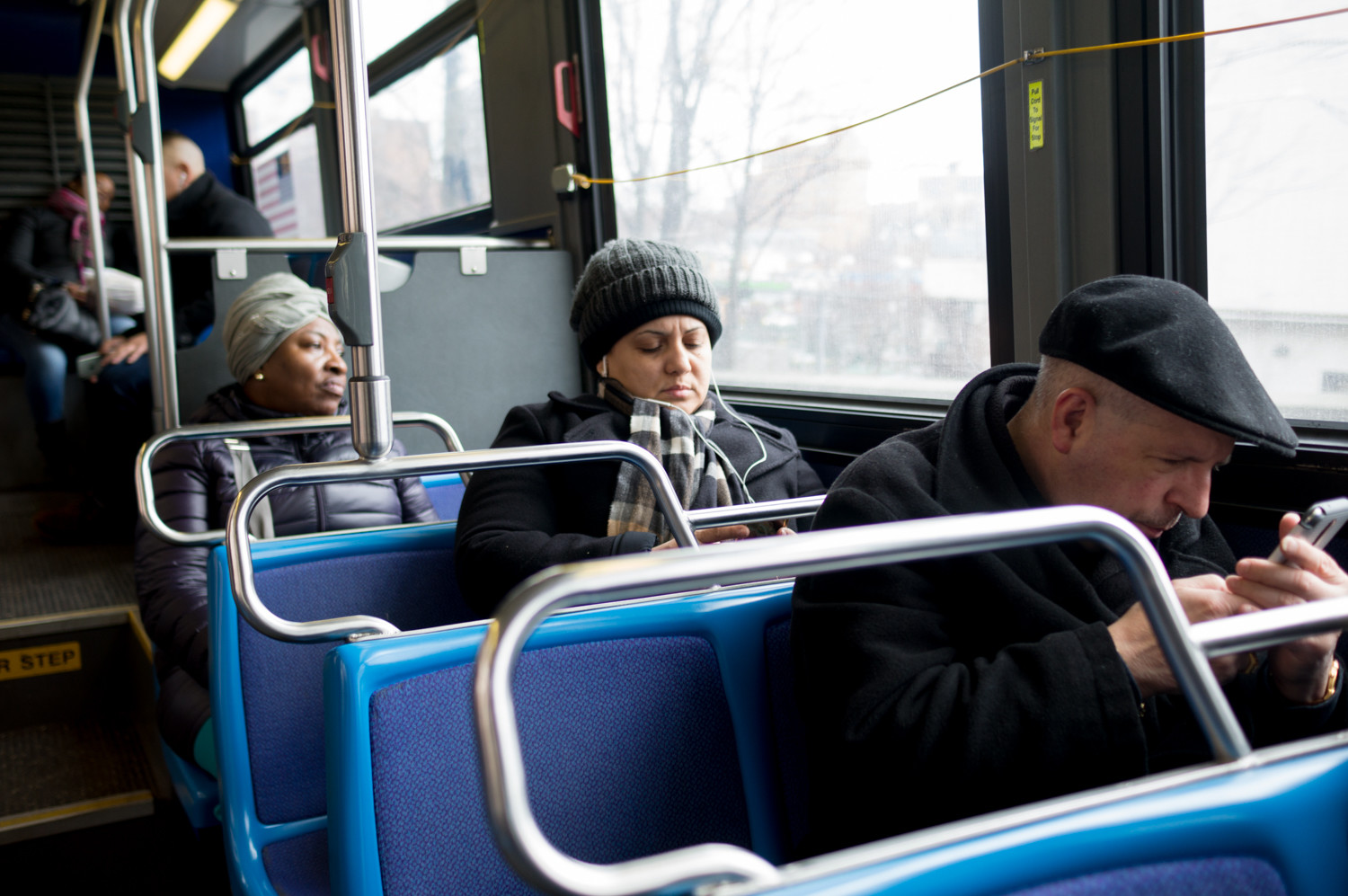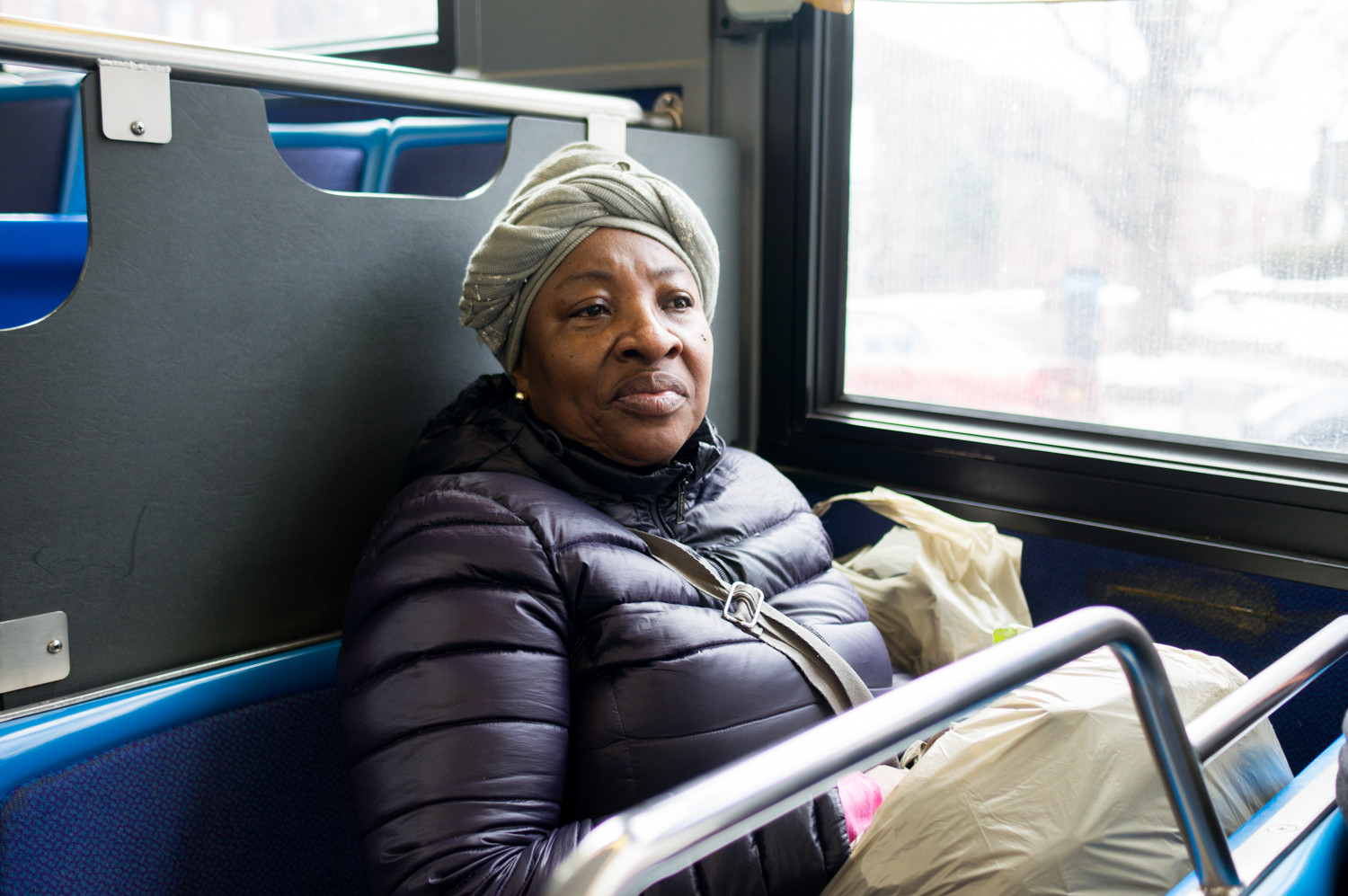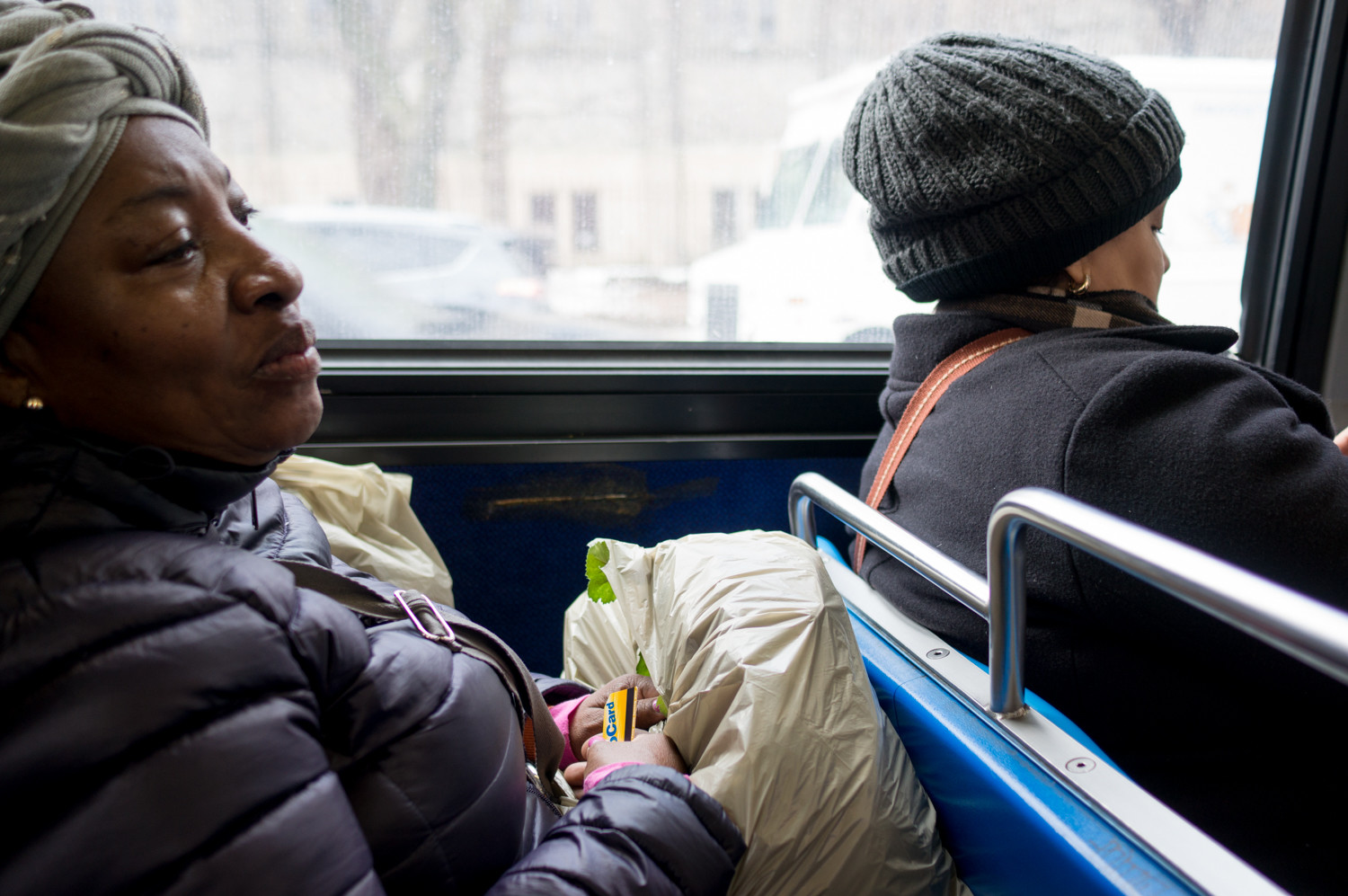Bus, subway fares still aren’t fair for working poor
Each day, millions of New Yorkers ride the subway and buses to get to work, doctors appointments, Broadway shows or even just a night out. Maligned though it may be, the public transportation system remains a lifeline connecting the far-flung corners of the five boroughs.
But what many take for granted — a $2.75 ride to get from one end of the city to the other, and almost anywhere in between — others cannot afford.
Margie McFadden isn’t so unfortunate. She pays full fare, but that isn’t easy.
“A lot of money every week and month and day,” McFadden said.
It’s an expense McFadden, who’s lived around University Avenue for 14 years, can’t avoid because she relies heavily on mass transit.
“All over, wherever I travel, I have to do the train or the bus,” she said.
That means shelling out $32 every week for an unlimited seven-day MetroCard.
Paying less would certainly ease the burden. With extra money in her pocket, McFadden says she’d be able to do a lot, like have more for her grandchildren’s college, or to simply pay bills.
Elizabeth Bermudez rides mass transit from her Morrisania home every day, whether traveling for her job as a home health aide, or running errands. The cost of all those rides adds up.
“Right now I’m only traveling three stops, and I have to pay $2.75,” Bermudez said. “But you got to do it.”
Lisa Baer has lived in Spuyten Duyvil for more than 20 years, and as a senior citizen, she pays half price. “It’s wonderful,” Baer said. “It’s great.”
If she had to pay full fare, however? Not so great.
“Oh, that would be tough,” Baer said. “I think I’d be stuck a lot more at home, because to pay $2.75 each way, that’s not affordable generally. I would just have a different lifestyle. I would think twice about taking the bus or going into the city.”
But for some, paying full fare is flat out too expensive. In fact, a 2015 survey from the Community Service Society of New York — an independent nonprofit research and advocacy organization focused on fighting poverty in the city — found that one in four low-income New Yorkers often were unable to afford subway fare.
Those who qualify for a reduced fare MetroCard, such as senior citizens or those with a qualifying disability, can travel for half fare.
But that simply doesn’t help enough people, especially the more than 300,000 working poor, according to the Community Service Society. For them, transit expenses can be prohibitively high, often exceeding 10 percent of their family budgets.
That means something has to be given up, like medical care. An estimated 800,000 riders living at or below federal poverty guidelines would be eligible for a half-price fare for the poor, saving them up to $700 a year.
Half-priced transit fares for poor working-age New Yorkers, or “fair fares,” originated from Community Service Society’s 2015 survey, according to spokesman Jeffrey Maclin. The organization has pushed for the Metropolitan Transportation Authority to expand half-price fares beyond seniors and those with disabilities, with not much success. Yet.
It would cost the city $200 million, something Mayor Bill de Blasio didn’t include in his recently released $88.7 billion preliminary budget. Its absence made Bronx borough president Ruben Diaz Jr., quite unhappy.
“For a relatively small amount of funding, the administration could provide the working poor with real financial relief by making ‘fair fares’ a reality,” Diaz said, in a release. “As we debate the future of our transit system and how it will be funded, we cannot lose sight of the needs of the working poor.”
Councilman Andrew Cohen said “fair fares” can do more than just help low-income New Yorkers — it could also alleviate the problem of fare evasion, illegally riding the subway or bus without paying, whether hopping the turnstile or sneaking in through the back door of the bus.
Still, Cohen cautioned against pointing fingers when it comes to who’s ultimately responsible for funding.
“I think that people have to be careful here, and not drinking the Kool-Aid,” Cohen said. “The City of New York does not control the MTA. The state provides the bulk of the funding. And I think that the city and the state are engaged in ongoing negotiations over a variety of things related to the subway” — some of which has to do with larger mismanagement issues on the part of the MTA.
Meanwhile, the full fare isn’t stopping Bermudez from taking the bus.
“It is expensive,” Bermudez said. “They could reduce it. Oh, yes — it would be helpful for me.”











